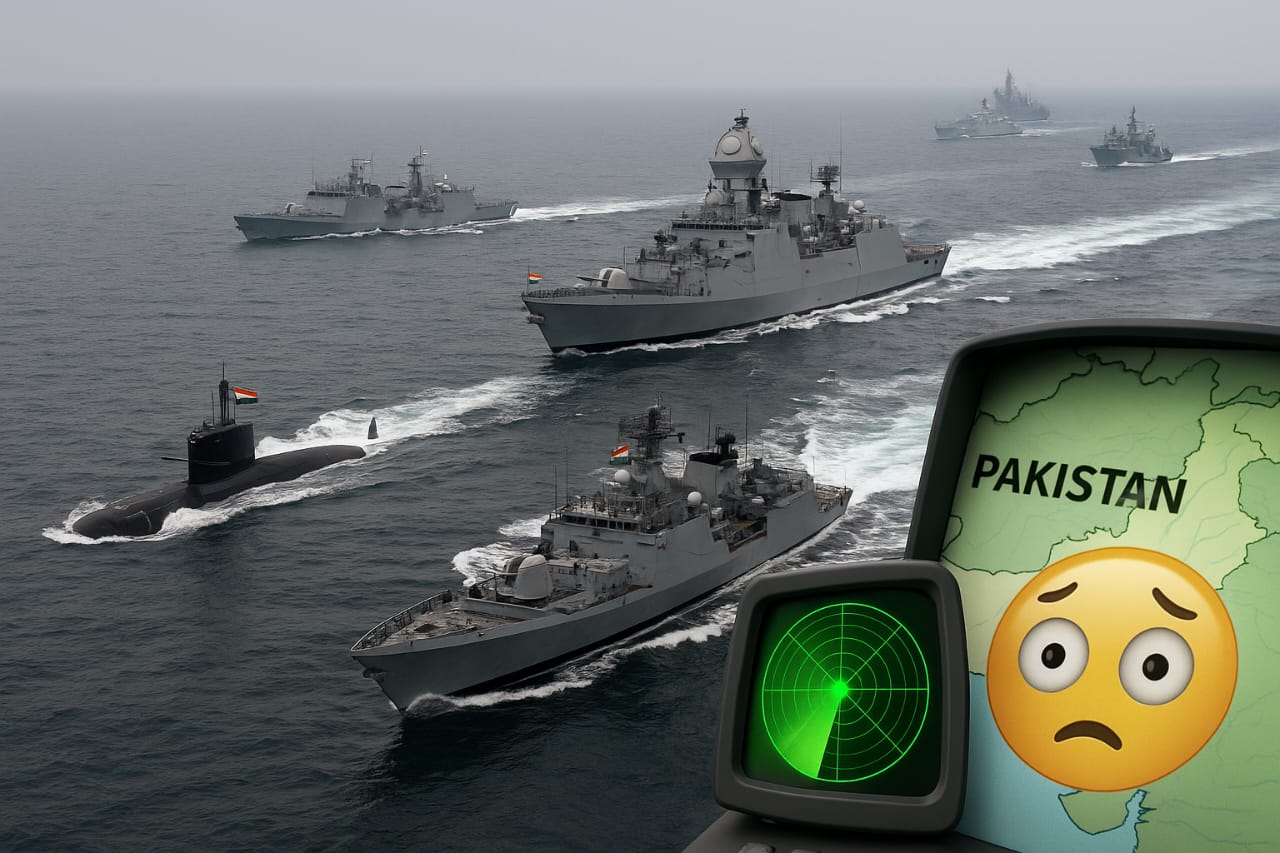The Indian Navy has commenced a major three-day maritime exercise in the Arabian Sea, involving both surface and sub-surface assets, in a clear demonstration of its operational readiness amid escalating regional tensions. The exercise, running from April 30 to May 2, brings India’s naval strength to the forefront at a time when the security environment around its borders and in the wider Indo-Pacific region is growing increasingly complex.
This latest operation follows closely on the heels of the India-France “Varuna” naval drills conducted in March 2025, which featured aircraft carrier INS Vikrant and included sophisticated anti-submarine warfare and surface combat maneuvers. The current exercise, according to defense sources, aims to reinforce India’s deterrence posture while enhancing tactical preparedness in a region of vital strategic importance.
The Arabian Sea has become a hotbed of geopolitical activity, with mounting friction along India’s western borders and broader unrest in the Middle East. Tensions flared recently along the Line of Control and the Working Boundary in Jammu’s Pargwal-Akhnoor sector following a terrorist attack in Jammu and Kashmir on April 24. The incident led to intensified exchanges of fire between Indian and Pakistani forces. While Pakistan has denied any provocation, India is reportedly briefing foreign diplomats to build international support for a potential military response, according to an April 27 report by The New York Times.
Further afield, geopolitical ripples from West Asia are also being felt. On April 1, 2025, the United States announced fresh sanctions on six entities and two individuals across Iran, the UAE, and China for supporting Iran’s ballistic missile and unmanned aerial vehicle (UAV) programs. These sanctions, part of a broader “maximum pressure campaign,” are aimed at curbing what Washington describes as Iran’s destabilizing military influence in the region.
Iran’s support for the Houthi rebels in Yemen has intensified a low-grade maritime conflict in the Red Sea, another critical waterway linked to the Arabian Sea via the Gulf of Aden. Houthi attacks on commercial vessels have raised alarms across global shipping and defense circles, pulling in both state and non-state actors and increasing the likelihood of wider conflict, according to Geopolitical Monitor.
The Arabian Sea’s strategic value is immense—it is a gateway to the Red Sea and the Suez Canal, the world’s second-busiest maritime route after the English Channel. India has been steadily increasing its naval footprint in the region, as demonstrated during joint exercises with the U.S. Navy in July 2024. That mission included Indian warships INS Aditya and INS Visakhapatnam operating alongside the USS Theodore Roosevelt, conducting air defense drills and complex sea-based operations.
Defense experts suggest that India’s current exercise serves several strategic objectives: asserting maritime dominance, enhancing force readiness, and sending a calibrated signal of deterrence to regional rivals. It also reinforces India’s role as a stabilizing power in the Indo-Pacific, especially amid the uncertainty driven by border skirmishes with Pakistan and Iran’s increasing assertiveness across the Middle East.
As global attention turns to the overlapping crises stretching from the Himalayas to the Horn of Africa, India’s latest naval maneuvers highlight the country’s growing resolve to safeguard its maritime interests and ensure stability across critical sea lanes of communication.













